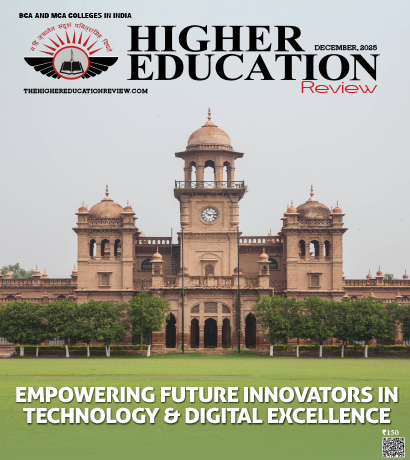Shaping Tomorrow's Workforce: Insights on Bridging Academia and Industry
 We live in a world where technology is progressing rapidly, changing our country's economic conditions. In times like this, it becomes essential to have a workforce with the necessary skills and expertise. Bringing academia and industry together is essential in giving students the tools they need to succeed in an ever-changing job market. The gap that exists between academia and business is not new. Traditional educational institutions frequently emphasise on academic knowledge, while industries require practical skills and adaptability. Students’ transition from academia to the professional world is a crucial time in their lives as it requires careful thought in their career decisions.
We live in a world where technology is progressing rapidly, changing our country's economic conditions. In times like this, it becomes essential to have a workforce with the necessary skills and expertise. Bringing academia and industry together is essential in giving students the tools they need to succeed in an ever-changing job market. The gap that exists between academia and business is not new. Traditional educational institutions frequently emphasise on academic knowledge, while industries require practical skills and adaptability. Students’ transition from academia to the professional world is a crucial time in their lives as it requires careful thought in their career decisions.
The Gap Between Academia and Industry
In recent times, there has been a noticeable difference in the kind of knowledge students possess and the knowledge required in the industry. Industry and academia are two separate fields that function on different levels, having different goals and beliefs. However, because of the rapid pace of change in the education environment, it is necessary for these two different worlds to come together to address and resolve some of the pressing issues affecting the outer world. This gap often diverts many individuals from making the right career choice, as the skills and knowledge taught in educational institutions do not align with the demands of the employer. The difference between the information and skills gained through formal education and the practical demands of job markets is known as the "industry-academia gap”.
The Contribution of Technology
Technology is one of the major factors responsible for this transformation. The need for technological skills and digital literacy is growing as industries evolve. In response, educational establishments need to implement technology-driven curricula that reflect the demands of today's market. This includes skills like critical thinking and problem-solving as well as soft skills like artificial intelligence and data analytics.
Bridging the Gap
Industry and Curriculum Alignment: One of the most important things that will help bridge the gap is aligning curriculum with industry requirements. Given the ever-evolving nature of the industry and changes in the job market, it is now essential to determine how best the academic curriculum can handle the many demands and requirements of the dynamic industry. Despite the rapid advancements in nearly every field, college curricula can be rigid and difficult to update. It is advised that curricula should be regularly changed and created with the demands of the industry in mind.
Workplace Exposure: Students receive much-needed experience when they are exposed to the industry at the right time and with thoughtful planning. These can be in the form of internships or part-time projects that students can work on. This exposes students to the reality of the workplace today and offers practical insights into how the industry operates. Although there is no assurance that these internships will lead to full-time positions, they will prepare students to adapt to the company's demands when they work in the field. Such possibilities increase students’ confidence as they learn a lot by being present in the industry.
Faculty Upgrade: Giving the faculty the appropriate exposure and training is just as important as focusing on the curriculum framework. Most of the faculty do not possess essential industry experience, which comes in handy when providing practical knowledge about industries. If faculty members are able to work with industry professionals on short industrial projects regularly, that would be great. This will guarantee that the faculty follows the most recent developments in the industry. It would be excellent to have employers step up and collaborate only with the scholars to design a common model for employment and curriculum that meets their particular sector needs. Employers will be able to hire people who are skilled and prepared for the workforce, graduating students will find it easier to transition into industry roles, and academic institutions will take great pride in seeing their students placed with reputable companies. The successful model will guarantee all of these benefits.
Student’s View Point
From the student's point of view, it is critical to embrace the digital age and provide students with the tools they need to navigate online developing skills platforms to support ongoing education. A key factor in improving the entire learning experience is the use of "learning management systems" and "massive open online courses." This method gives students a dynamic and engaging educational experience by expanding their knowledge base and matching them with the changing needs of the industry.
In a world that is changing quickly, there are many obstacles to overcome to connect academia and industry successfully, but the advantages might be significant. Looking ahead, it is critical that everyone involved in the industry and educational institutions understand their mutual responsibilities in educating the next generation about the complex requirements of the present job market. We can create a workforce that is capable of navigating the unknowns of the future through coordinated efforts and wise collaborations, promoting economic growth and innovation for years to come.

